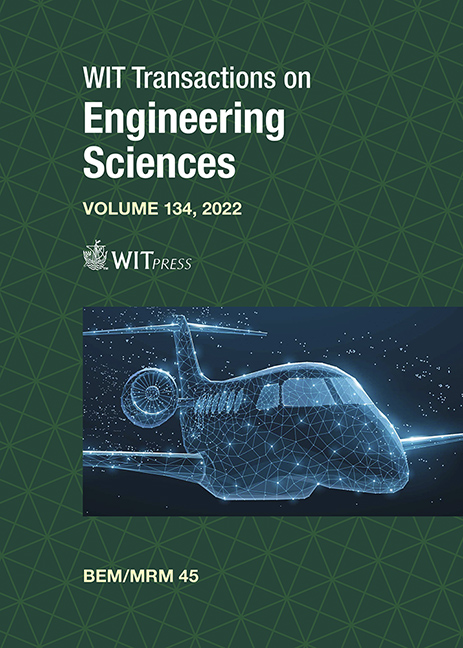ACCURATE FAST MULTIPOLE SCHEME FOR THE BOUNDARY ELEMENT ANALYSIS OF THREE-DIMENSIONAL LINEAR POTENTIAL PROBLEMS
Price
Free (open access)
Transaction
Volume
134
Pages
13
Page Range
3 - 15
Published
2022
Paper DOI
10.2495/BE450011
Copyright
Author(s)
NEY AUGUSTO DUMONT, HILTON MARQUES SOUZA SANTANA
Abstract
This paper is part of a research work to implement, test, and apply a novel numerical tool that can simulate on a personal computer and in just a few minutes a problem of potential or elasticity with up to tens of millions of degrees of freedom. The first author’s group has already developed their own version of the fast multipole method (FMM) for two-dimensional problems, which relies on a consistent construction of the single-layer potential matrix of the collocation boundary element method so that ultimately only polynomial terms (as for the double-layer potential matrix) are required to be integrated along generally curved segments related to a given field expansion pole. The core of the present paper is the mathematical assessment of the double expansions needed in the 3D FMM. The 3D implementation is combined with a particular formulation for linear triangle elements in which all integrations for adjacent source point and boundary element are carried out analytically. As a result, numerical approximations are due exclusively to the FMM series truncations. This allows isolating and testing truncation errors incurred in the series expansions and thus for the first time properly assessing the mathematical features of the FMM, as illustrated by means of two examples. Adaptive numerical quadratures as well as the complete solution of a mixed boundary problem using a GMRES solver, for instance, are just additional tasks and, although already implemented, are not reported herein.
Keywords
boundary elements, fast multipole, machine-precision integration, potential problems, three-dimensional problems





